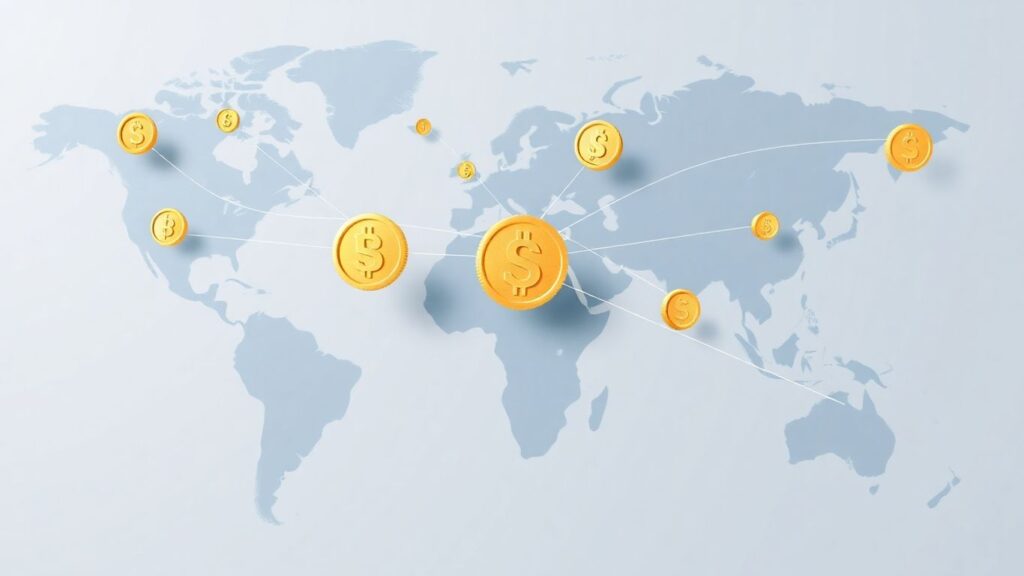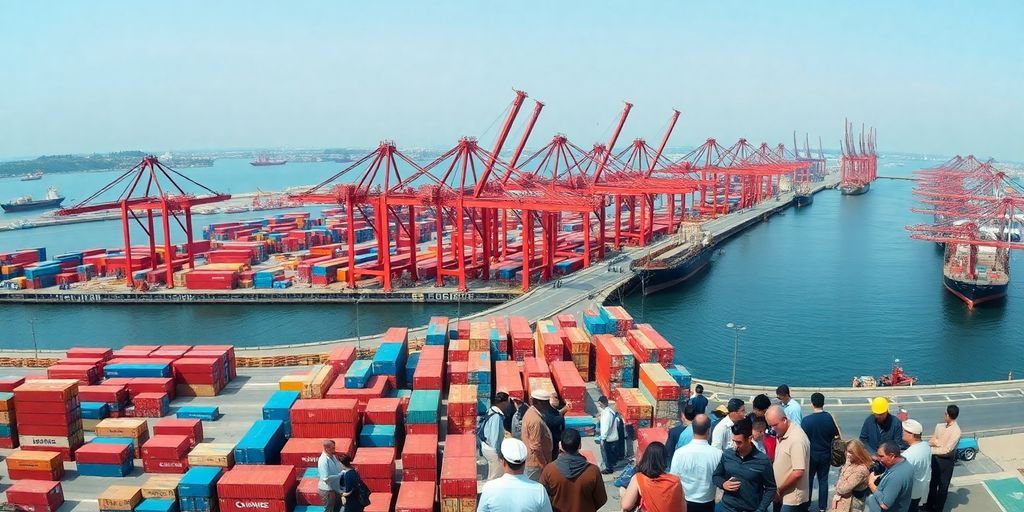Guillaume Pitron: Exploring the Hidden Costs of Renewable Energy

Guillaume Pitron’s work sheds light on a topic that’s often overlooked in discussions about renewable energy: the hidden costs. While the world rushes towards green technologies to combat climate change, Pitron points out the environmental and societal impacts of rare metal extraction. His insights urge us to rethink how sustainable our ‘clean’ energy really is. The book ‘The Rare Metals War’ dives into these issues, revealing the complex layers behind the shiny promise of renewable energy.
Key Takeaways
- Renewable energy technologies heavily rely on rare metals, which have their own environmental costs.
- The extraction and processing of rare metals can lead to significant pollution and health risks.
- China dominates the rare metals market, affecting global trade and politics.
- Pitron suggests that reopening mines in the West could make consumers more aware of the true costs of green technology.
- Understanding the full impact of rare metal dependency is crucial for making informed decisions about our energy future.
The Environmental Impact of Rare Metals
Mining Practices and Their Consequences
Mining for rare metals is a dirty business. It’s not just about digging up rocks; it’s about leaving scars on the earth. Open-pit mining is a common method, and it tears up landscapes, leaving behind barren wastelands. In places like Liangjiang, China, the extraction of graphite—a key component in batteries—has led to severe environmental damage. The land is stripped bare, and toxic chemicals are released into the water, polluting local ecosystems. The harsh reality is that while these metals are crucial for green technologies, their extraction is anything but green.
Pollution and Toxic Exposure
The process of extracting and refining rare metals releases a lot of nasty stuff into the environment. We’re talking about toxic chemicals and sometimes even radioactive materials. In Baotou, China, there’s a massive lake filled with dangerous waste from rare earth refineries. It’s so bad that nearby villages have seen a spike in cancer rates. People there are dealing with polluted water, poisoned soil, and a host of health problems. It’s a grim reminder that our push for a cleaner future comes with hidden costs.
The Global Footprint of Rare Metal Extraction
The demand for rare metals isn’t just a local issue—it’s a global one. As countries race to secure these valuable resources, they’re leaving a trail of environmental destruction in their wake. From cobalt mines in the Democratic Republic of Congo to lithium operations in Latin America, the story is the same: environmental degradation and social upheaval. The global footprint of rare metal extraction is massive, and it’s something we can’t ignore if we’re serious about sustainability.
Our quest for rare metals is reshaping the planet in ways we might not fully understand yet. It’s a new kind of dependency, one that comes with its own set of challenges and consequences.
Guillaume Pitron’s Insights on Resource Scarcity
The Concept of Peak Resources
Guillaume Pitron sheds light on the looming threat of resource depletion, a subject often brushed aside. He argues that we’ve already tapped into the most accessible and profitable resources. Now, we’re forced to explore extreme environments like deep-sea beds and even asteroids. This relentless search signals a shift towards peak resources, where the availability of essential materials will start to decline. Pitron warns that our collective denial of this reality could lead to severe consequences for future generations.
The Role of Rare Metals in Modern Technology
Rare metals are the backbone of today’s technology-driven world. From smartphones to electric cars, these elements are crucial. As we push for greener technologies, the demand for rare metals skyrockets. However, the extraction and refinement processes are not without environmental and ethical challenges. Greenland, with its untapped natural resources, could play a significant role in meeting these demands, but it requires sustainable practices.
Challenges in Sustainable Resource Management
Managing resources sustainably is a daunting task. Pitron highlights the paradox: while we strive for sustainability, our methods often fall short. The environmental impact of mining rare metals is significant, leading to pollution and habitat destruction. Moreover, geopolitical tensions arise as countries vie for control over these precious resources. A sustainable future demands innovative solutions to balance consumption with environmental stewardship.
By ignoring the hidden costs of our technological advancements, we risk undermining the very sustainability we aim to achieve. Pitron’s insights urge us to reconsider our approach and take responsibility for the environmental impact of our modern conveniences.
Geopolitical Implications of the Rare Metals Trade

China’s Dominance in the Market
China holds a commanding position in the rare metals market, controlling a significant portion of global supply chains. This dominance gives China considerable leverage in international affairs, allowing it to influence prices and availability of these critical resources. China’s monopoly has reshaped global trade dynamics, with many countries finding themselves dependent on Chinese exports for their technological and energy needs. This reliance has sparked debates on the vulnerability of global supply chains and the urgent need for diversification.
International Tensions and Trade Wars
The geopolitical landscape is increasingly shaped by the quest for rare metals. Countries are vying for control over these resources, leading to heightened tensions and trade disputes. The trade war between China and the United States is a prime example, where rare metals have been used as a bargaining chip. Nations are now scrambling to secure their own supply chains, often at the expense of international cooperation. This scramble can lead to a fragmented global market, where alliances are tested, and new partnerships are formed.
The Strategic Importance of Rare Metals
Rare metals are not just commodities; they are strategic assets essential for national security and technological advancement. From smartphones to military equipment, these metals are integral to modern life. The strategic importance of rare metals has prompted nations to rethink their resource policies and invest in alternative sources. As the world moves towards a greener economy, the demand for these metals will only increase, making them a focal point of geopolitical strategy. In this context, understanding and managing fear, as highlighted by Cus D’Amato, becomes crucial in navigating this complex landscape of resource dependency and international relations.
The Hidden Costs of Renewable Energy Technologies
Material Demands of Green Technologies
Switching to renewable energy sources like solar and wind power is often seen as a cleaner alternative to fossil fuels. But there’s a catch. Building these green technologies requires a lot of materials. We’re talking about metals like lithium for batteries, copper for wiring, and rare earth elements for magnets in wind turbines. This demand for materials is not just about quantity but also about the environmental impact of mining and processing these elements. The irony is that while these technologies aim to reduce carbon emissions, they create a new dependency on raw materials.
Energy Returned on Energy Invested
When we talk about renewable energy, we often focus on the energy output. But what about the energy input? The concept of Energy Returned on Energy Invested (EROEI) is crucial here. It measures how much energy we get back compared to what we put in. For renewable technologies, the EROEI can be quite low. Manufacturing solar panels and wind turbines consumes a lot of energy, sometimes sourced from fossil fuels. This means that the net energy gain isn’t as high as you might think.
The Paradox of Sustainable Development
There’s a paradox in trying to achieve sustainable development through renewable energy. On one hand, we want to minimize our carbon footprint. On the other, the very technologies we rely on to do this come with their own set of environmental and social challenges. The mining for rare metals often leads to pollution and habitat destruction. Moreover, the communities around these mining sites face social and economic upheavals. So, while the goal is sustainability, the path there is anything but straightforward.
The journey to a sustainable future is fraught with complexities. While renewable energy promises a cleaner tomorrow, it demands a careful balance of resource management today.
Societal and Economic Impacts of Rare Metal Dependency
Economic Costs and Market Volatility
The global demand for rare metals has skyrocketed, leading to significant economic impacts. Prices for these metals can be highly volatile, influenced by geopolitical tensions, supply chain disruptions, and changes in demand. This volatility can lead to unpredictable costs for industries reliant on these materials, affecting everything from consumer electronics to automotive manufacturing. The economic ripple effect can be profound, impacting jobs, investment, and even national economies.
Social Consequences in Mining Regions
Mining regions around the world experience profound social changes due to rare metal extraction. While mining can bring jobs and infrastructure, it often also leads to social upheaval. Communities may face displacement, health issues from pollution, and changes to traditional ways of life. The lure of mining jobs can also create a dependency, making it difficult for these areas to develop diverse and sustainable economies.
The Ethical Dilemma of Resource Extraction
The extraction of rare metals poses significant ethical questions. It often involves environmental degradation and human rights concerns, particularly in developing countries where regulations may be lax. The challenge lies in balancing the economic benefits against the environmental and social costs. As consumers, we must ask ourselves if the benefits of technology outweigh the hidden costs of resource extraction.
The quest for rare metals, while fueling technological advancement, brings with it a host of societal and economic challenges that need careful consideration. It’s a complex interplay of progress and cost, where the true price is often paid by those least able to afford it.
To address these challenges, countries are exploring solutions like reopening mines in the West and developing ethical mining practices. These efforts aim to reduce dependency on regions with lower environmental standards and promote a more balanced approach to resource consumption and sustainability.
Proposed Solutions and Future Directions

Reopening Mines in the West
Reopening mines in the Western world is a hot topic, especially for critical resources like lithium. While this move can help reduce reliance on foreign sources, it faces pushback due to environmental concerns. Local communities often resist these projects because of the potential impact on their surroundings. Balancing economic benefits with ecological preservation is a challenge that policymakers need to navigate.
Developing Ethical Mining Practices
Ethical mining is more than a buzzword—it’s a necessity. To minimize environmental and human costs, stricter regulations and oversight are essential. This means adopting technologies that lessen the environmental footprint of mining operations. International cooperation is crucial, ensuring that the supply chain remains transparent and responsible.
Balancing Consumption and Sustainability
We’re in an era where sustainable consumption is not just a choice but a requirement. Shifting from ownership to access can help ease resource strains. Imagine a world where instead of owning cars, we rely on shared transportation networks, or where electronics are leased and returned for recycling. Policies that encourage product reusability and recyclability can make a significant impact. Meanwhile, consumers have the power to drive demand for ethically produced goods by supporting companies committed to sustainable practices.
The road to a sustainable future is complex. It’s not just about adopting new technologies but also about rethinking how we consume and interact with the world around us.
The Rare Metals War: A Call to Action
Raising Awareness Through Journalism
Guillaume Pitron’s book, The Rare Metals War, is a wake-up call for everyone. It uncovers the hidden truths behind our shift to renewable energy, which, while promising a cleaner future, is deeply reliant on rare metals. Journalism plays a crucial role in bringing these issues to light, making people aware of the environmental and social costs associated with mining these metals. As we embrace technologies like electric vehicles, it’s essential to understand the impact of our choices.
The Role of Policy in Resource Management
Governments worldwide need to step up and create policies that manage rare metal resources sustainably. This involves regulating mining practices, encouraging efficient use of materials, and investing in research for alternative solutions. Policies should aim to balance economic growth with environmental protection, ensuring that we do not sacrifice one for the other.
Educating Consumers on Environmental Costs
Consumers hold power through their purchasing choices. Educating the public about the environmental impact of products can drive demand for more sustainable options. Awareness campaigns can highlight how rare metals are extracted and the consequences of their use, encouraging people to make informed decisions. By understanding the true cost of their gadgets and green technologies, consumers can push for change in the market.
Conclusion
In wrapping up our look into Guillaume Pitron’s insights, it’s clear that the shift to renewable energy isn’t as straightforward as it seems. While we’re all eager to ditch fossil fuels, Pitron reminds us that this green path is paved with its own set of challenges. The demand for rare metals, crucial for our beloved gadgets and green tech, is skyrocketing. And with that comes environmental and geopolitical headaches. It’s a bit of a wake-up call, really. We can’t just slap a "green" label on something and call it a day. There’s a whole lot more going on behind the scenes. So, as we charge ahead into this eco-friendly future, let’s keep Pitron’s warnings in mind. It’s about finding a balance, making sure our solutions don’t create new problems. That’s the real challenge.
Frequently Asked Questions
What are rare metals?
Rare metals are special kinds of metals that are not found in large amounts on Earth. They are important for making things like smartphones, computers, and electric cars.
Why do we need rare metals for green energy?
Green energy, like wind and solar power, needs rare metals to work. These metals help make the parts that turn sunlight and wind into electricity.
What problems are caused by mining rare metals?
Mining rare metals can hurt the environment. It can cause pollution and make land unusable. Sometimes, it also harms the people who live near the mines.
How does China play a role in the rare metals market?
China is the biggest producer of rare metals in the world. This gives them a lot of control over the prices and supply of these important materials.
What is Guillaume Pitron’s book about?
Guillaume Pitron’s book talks about the hidden costs of using rare metals for green energy. It explains how mining these metals affects the environment and global politics.
Can we find solutions to the problems caused by rare metals?
Yes, there are ways to solve these problems. We can recycle more, mine responsibly, and use fewer rare metals in new technologies.








Responses